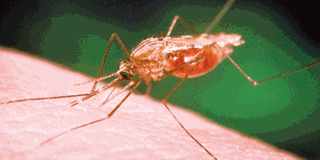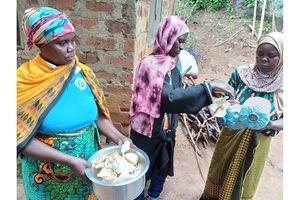Locally grown plants can help in treating malaria

Scientists in East Africa are now devising ways by which medicinal plants can revolutionise the treatment of malaria.
Malaria remains the number one killer of Tanzanians, with a 2017 research by the National Institute for Medical Research (NIMR) showing that a total of 247,976 people had died in Tanzania during the period between 2006 and 2015 due to Malaria, Lower Respiratory Infections, HIV/Aids and road accidents.
But scientists are optimistic that things would soon change, banking their hopes on ongoing studies on the impact of herbal medicines in the cure of malaria.
Researches show that traditional medicines have been used to treat malaria for thousands of years and are the source of the two main groups (artemisinin and quinine derivatives) of modern antimalarial drugs.
In one of its recent reports, the World Health Organisation (WHO) said 80 per cent of the population in developing countries rely on traditional medicine for their health care needs.
Recently, a team of researchers from the Kenya Medical Research Institute (Kemri) found that plant extracts can inhibit the growth of malaria parasites, signifying that there is much in stock to control of the disease.
This also comes at a time when medical scientists across the world are striving to develop a cure for malaria that is more effective and free from the menace of drug resistance. Amid the search for a comprehensive cure, Africa continues to bear the brunt of the global burden of malaria. In 2015, 88 per cent of global cases and 90 percent of global deaths occurred in the African Region, says WHO.
Between 2000 and 2015, the number of malaria cases declined by 42 per cent while the malaria death rate declined by 66 per cent in the African Region, WHO says further.
Why medicinal plants
For many years, modern medicine has dominated the healthcare industry and in malaria treatment, Artemisinin remains the first line medication in healthcare settings across the region.
However, there are concerns about the emerging tide of drug resistance. This has been widely reported in South East Asia but it’s now threatening the East Africa region as well.
What happens, according to scientists, the artemisinin compound is less effective in clearing all parasites within a 3-day period among patients who are infected with artemisinin-resistant strains of malaria.
The World Health Organisation is now working with national malaria programmes, research institutions, and other partners in trying to combat the threat of malaria drug resistance.
Yet, in view of the growing concerns, researchers believe there is need to search for alternative antimalarial drugs.
Dr Lucy Olocha, and a team of researchers from Kemri undertook a study in which they evaluated how the plants, known scientifically as Ajuga remota and Caesalpinia volkensii, can help fight malaria.
Using mice, they carried out an experiment in which they looked at how the leaf extracts of the medicinal plants can be used to influence the body’s defense system and what that entails in control of the malaria parasite.
“The Ajuga remota and Caesalpinia volkensii leaves were extracted using ethanol and petroleum ether respectively,’’ said a study which was presented in Nairobi at the recent Kemri Annual Scientific and Health Conference(KASH).
According to findings, Ajuga remota was able to inhibit the malaria parasite by 44.9 per cent while the Caesalpinia volkensii could do it by 57.9 per cent.
The researchers, however, stated that the results relating to how the body defense system responds with the medicinal plants, are still being analysed.
“Combined plant extracts were seen to be more effective at inhibiting parasite growth in vivo,’’ reads part of the study recommendations.
“Therefore, this indicates a synergistic or additive effect of the combined extracts unlike that of the individual extracts,’’ explained the scientists in their study, titled: Immunomodulatory and anti-malaria effects of Ajuga Remota and Caesalpinia Volkensii Extracts during Malaria Infection in Balb/C Mice.




